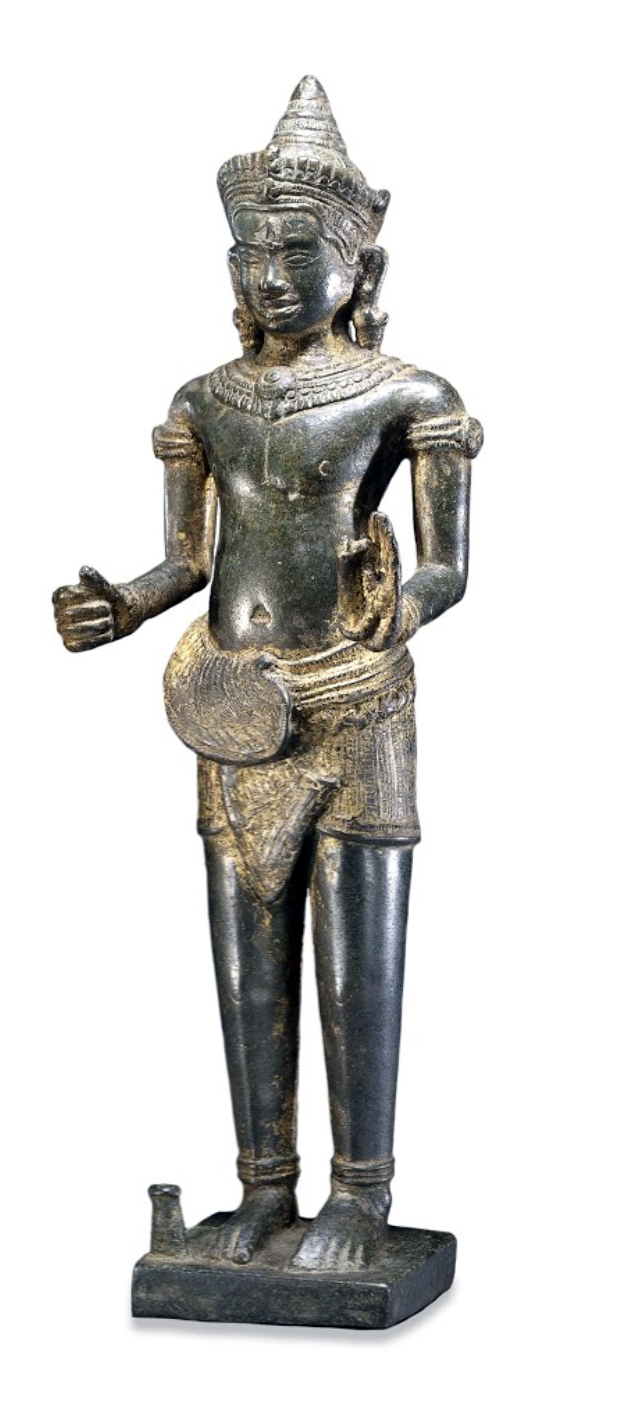
Shiva, 11th century, Khmer Empire, gilt bronze, 29 x 9.5 cm, Cambodia (© Trustees of the British Museum)
Hinduism and Buddhism were present in mainland South-east Asia from the first centuries C.E. brought from India by merchants and mercenaries. In the eleventh and twelfth centuries, Cambodia was the center of the Khmer Empire with its capital at Angkor. One of the world’s greatest temples, Angkor Wat, was built during this period. Hinduism and Buddhism were both patronized by the Khmer kings. Large numbers of Hindu and Buddhist temples and images were produced in the distinctive Khmer style.
This image is of the major Hindu deity Shiva, who can be identified by the third eye in his forehead. Although now missing, this image was originally holding a trident, Shiva’s characteristic weapon, in its right hand. This attribute is unlike any of the Shiva images produced in India, and demonstrates the local adaptation of Hinduism to South-east Asian culture.
Like many of the Buddha images of mainland South-east Asia, this Hindu bronze image was originally gilt. The broad face, clearly defined lips and eyes, and the wide crown are all distinctive features of the Khmer style of sculpture.
© Trustees of the British Museum

